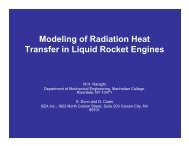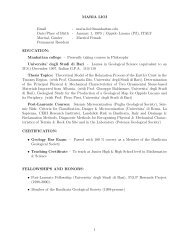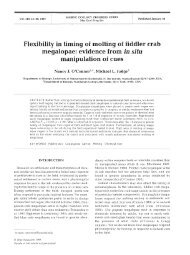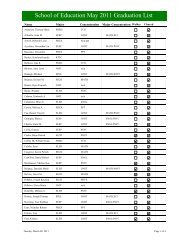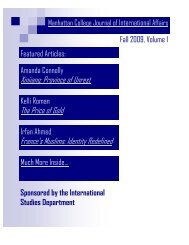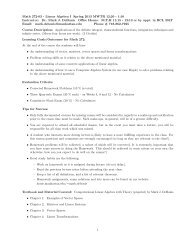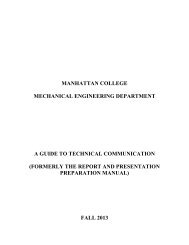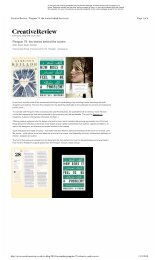4.1 Thermodynamic Analysis of Control Volumes
4.1 Thermodynamic Analysis of Control Volumes
4.1 Thermodynamic Analysis of Control Volumes
Create successful ePaper yourself
Turn your PDF publications into a flip-book with our unique Google optimized e-Paper software.
The conservation <strong>of</strong> mass principle for a general steady-flow system with multiple inlets and exitscan be expressed in the rate form as:ṁ i = ṁ eTotal mass entering Total mass leavingCV per unit time CV per unit time(4.2.1)where the subscripts i stands for inlet and e for exit.Question to Think About!If the conservation <strong>of</strong> mass principle exists, what about conservation <strong>of</strong> volume? (Hint: thinkabout the definition <strong>of</strong> density (or specific volume) and compressibility!)Conservation <strong>of</strong> Energy:It was pointed out earlier that system properties remain constant for the duration <strong>of</strong> asteady-state process. In order for the total energy <strong>of</strong> an open system undergoing a steady-state processto remain constant, the amount <strong>of</strong> energy entering a control volume in all forms (heat, work, masstransfer) must be equal to the amount <strong>of</strong> energy leaving it. By this line <strong>of</strong> reasoning, the conservation<strong>of</strong> energy principle for a general steady-flow system with multiple inlets and exits can bemathematically stated as:Q . − Ẇ = ṁ e e − ṁ i iTotal energy crossing Total energy transported Total energy transportedboundary as heat and work out <strong>of</strong> CV with mass per into CV with mass perper unit time unit time unit timewhere θ is the tot al energy <strong>of</strong> the flowing fluid, including the flow work, per unit mass. Eq. (4.2.2) canalso be expressed as:(4.2.2)(4.2.3)Dividing Eq. (4.2.3) by ṁ gives the first law relation for control volumes on a unit-mass basis, or ...q − w = ⎛ ⎝h e + V e 22g c+ gz eg c⎞ ⎠− ⎛ ⎝h i + V i 22g c+ gz ig c(4.2.4)4.3 Some Steady-Flow Engineering DevicesMany engineering devices operate essentially under the same conditions for long periods <strong>of</strong> time(e.g. components <strong>of</strong> a steam power plant). Therefore, these devices can be conveniently analyzed assteady-flow devices.ENGS205--Introductory <strong>Thermodynamic</strong>s page 39



